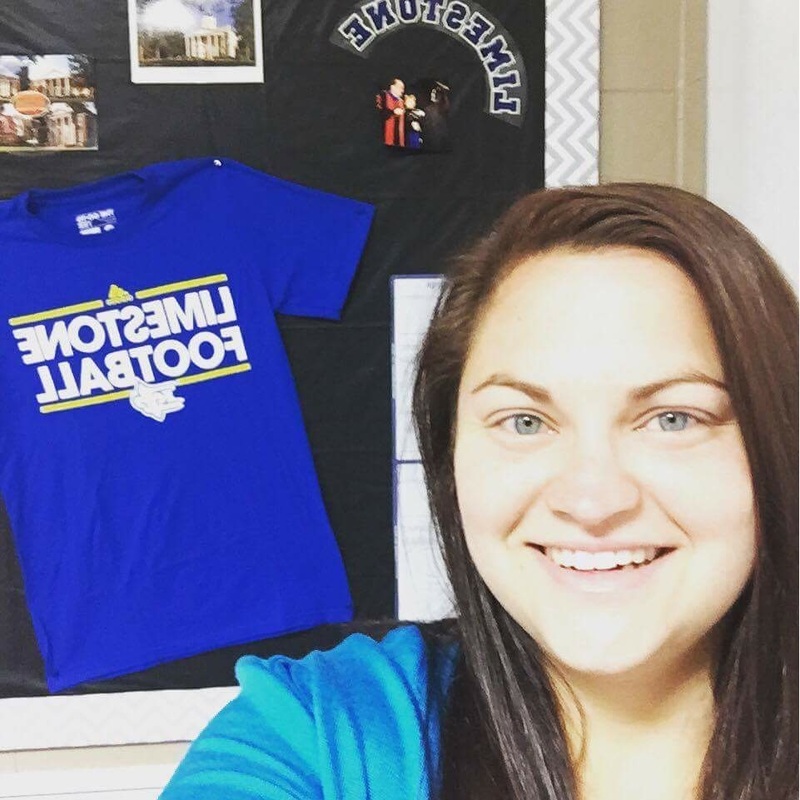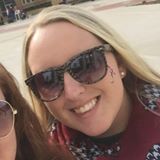Teacher Cadet Curriculum
Experiencing Education, 11th Edition Preview Chapters:
Preview the Teacher Cadet Curriculum below using the scroll feature on the side.
Preview the Teacher Cadet Curriculum below using the scroll feature on the side.
Your browser does not support viewing this document. Click here to download the document.
Experiencing Education - 11th Edition Standards
Experiencing Learning
AWARENESS AND REFLECTION
I.1.1: Students will analyze their strengths and areas for improvement as learners.
I.1.2: Students will evaluate themselves as diverse individuals, learners, and community members.
I.1.3: Students will determine how diversity enhances the classroom and the community.
I.1.4: Students will analyze the role of self-esteem in learning and its contributing factors.
I.1.5: Students will recognize and establish a respectful environment for diverse populations of students in the classroom.
STYLES AND NEEDS
I.2.1: Students will evaluate different learning styles.
I.2.2: Students will identify the special needs and exceptionalities of learners and determine how these needs affect the learning process.
I.2.3: Students will evaluate major physical, social, and personal challenges that can impede
successful learning.
GROWTH AND DEVELOPMENT
I.3.1: Students will differentiate among the physical stages of learners.
I.3.2: Students will differentiate among the cognitive stages of learners.
I.3.3: Students will distinguish between the moral stages of learners.
I.3.4: Students will analyze the steps in the psychosocial stages of learners.
I.3.5: Students will apply their knowledge of the developmental changes of learners.
I.1.1: Students will analyze their strengths and areas for improvement as learners.
I.1.2: Students will evaluate themselves as diverse individuals, learners, and community members.
I.1.3: Students will determine how diversity enhances the classroom and the community.
I.1.4: Students will analyze the role of self-esteem in learning and its contributing factors.
I.1.5: Students will recognize and establish a respectful environment for diverse populations of students in the classroom.
STYLES AND NEEDS
I.2.1: Students will evaluate different learning styles.
I.2.2: Students will identify the special needs and exceptionalities of learners and determine how these needs affect the learning process.
I.2.3: Students will evaluate major physical, social, and personal challenges that can impede
successful learning.
GROWTH AND DEVELOPMENT
I.3.1: Students will differentiate among the physical stages of learners.
I.3.2: Students will differentiate among the cognitive stages of learners.
I.3.3: Students will distinguish between the moral stages of learners.
I.3.4: Students will analyze the steps in the psychosocial stages of learners.
I.3.5: Students will apply their knowledge of the developmental changes of learners.
Experiencing the CLASSROOM
OBSERVATION AND PREPARATION
II.1.1: Students will analyze their strengths and areas for improvement as potential teachers.
II.1.2: Students will evaluate positive and negative aspects of the teaching profession.
II.1.3: Students will evaluate appropriate instructional objectives after analysis of developmental stages of learners.
II.1.4: Students will distinguish between effective and ineffective methodologies and teaching
strategies and traits in various educational settings.
II.1.5: Students will analyze ways in which a teacher’s personality impacts instructional style andinteraction.
II.1.6: Students will defend effective teaching methodologies and strategies.
II.1.7: Students will evaluate components of effective classroom climate, management, and discipline.
II.1.8: Students will incorporate various technologies in the planning of effective instruction and demonstrate its application.
II.1.9: Students will evaluate various assessment techniques.
II.1.10: Students will design and deliver an effective lesson for instructor and peer feedback that differentiates instruction to accommodate all learners.
APPLICATION AND INSTRUCTION: THE INTERNSHIP WITH A COOPERATING TEACHER
II.2.1: Students will implement developmentally appropriate learning activities for all learners in order to build confidence, knowledge and skills.
II.2.2: Students will accommodate major physical, social, and personal challenges that can impede successful learning.
II.2.3: Students will apply knowledge of learning styles, multiple intelligences, and Bloom’s Taxonomy, Webb’s Depth of Knowledge, brain-based strategies for learning, and classroom management to instruction and assessment.
II.2.4: Students will design and deliver an effective lesson in a classroom setting that differentiates instruction to accommodate all learners.
II.2.5: Students will apply the components of effective classroom climate, management, and
discipline.
II.2.6: Students will describe, analyze, and reflect on their teaching practices and field experiences.
II.1.1: Students will analyze their strengths and areas for improvement as potential teachers.
II.1.2: Students will evaluate positive and negative aspects of the teaching profession.
II.1.3: Students will evaluate appropriate instructional objectives after analysis of developmental stages of learners.
II.1.4: Students will distinguish between effective and ineffective methodologies and teaching
strategies and traits in various educational settings.
II.1.5: Students will analyze ways in which a teacher’s personality impacts instructional style andinteraction.
II.1.6: Students will defend effective teaching methodologies and strategies.
II.1.7: Students will evaluate components of effective classroom climate, management, and discipline.
II.1.8: Students will incorporate various technologies in the planning of effective instruction and demonstrate its application.
II.1.9: Students will evaluate various assessment techniques.
II.1.10: Students will design and deliver an effective lesson for instructor and peer feedback that differentiates instruction to accommodate all learners.
APPLICATION AND INSTRUCTION: THE INTERNSHIP WITH A COOPERATING TEACHER
II.2.1: Students will implement developmentally appropriate learning activities for all learners in order to build confidence, knowledge and skills.
II.2.2: Students will accommodate major physical, social, and personal challenges that can impede successful learning.
II.2.3: Students will apply knowledge of learning styles, multiple intelligences, and Bloom’s Taxonomy, Webb’s Depth of Knowledge, brain-based strategies for learning, and classroom management to instruction and assessment.
II.2.4: Students will design and deliver an effective lesson in a classroom setting that differentiates instruction to accommodate all learners.
II.2.5: Students will apply the components of effective classroom climate, management, and
discipline.
II.2.6: Students will describe, analyze, and reflect on their teaching practices and field experiences.
Experiencing the Teaching Profession
HISTORY AND TRENDS
III.1.1: Students will identify and analyze the impact of key historical educational events in the United States.
III.1.2: Students will evaluate various educational philosophies and begin developing their own personal philosophy of education.
STRUCTURE AND GOVERNANCE
III.2.1: Students will compare and contrast the various types of schooling.
III.2.2: Students will analyze the governance structure of their local, state, and national educational systems.
CERTIFICATION AND EMPLOYMENT
III.3.1: Students will investigate careers in education.
III.3.2: Students will describe the process and structure of teacher certification.
III.3.3: Students will identify the reasons for teacher shortages and the content and geographic areas that are most greatly impacted.
III.3.4: Students will demonstrate effective job application and interview skills.
ETHICS AND PROFESSIONALISM
III.4.1: Students will analyze and interpret the current state code of educator conduct.
III.4.2: Students will demonstrate how teachers can exhibit leadership as advocates and agents of change for education and their communities.
III.4.3: Students will identify the services professional organizations provide for teachers.
III.1.1: Students will identify and analyze the impact of key historical educational events in the United States.
III.1.2: Students will evaluate various educational philosophies and begin developing their own personal philosophy of education.
STRUCTURE AND GOVERNANCE
III.2.1: Students will compare and contrast the various types of schooling.
III.2.2: Students will analyze the governance structure of their local, state, and national educational systems.
CERTIFICATION AND EMPLOYMENT
III.3.1: Students will investigate careers in education.
III.3.2: Students will describe the process and structure of teacher certification.
III.3.3: Students will identify the reasons for teacher shortages and the content and geographic areas that are most greatly impacted.
III.3.4: Students will demonstrate effective job application and interview skills.
ETHICS AND PROFESSIONALISM
III.4.1: Students will analyze and interpret the current state code of educator conduct.
III.4.2: Students will demonstrate how teachers can exhibit leadership as advocates and agents of change for education and their communities.
III.4.3: Students will identify the services professional organizations provide for teachers.
/
- 1
- 2
- 3
- 4
- 5
I was reading through my Teacher Cadet folder today (I completed this course 10 yrs ago!) and I was reminded of how much this program impacted my life. It's simple; it taught me that when meaningful relationships are built with students first, teaching comes effortlessly.
2006 Teacher Cadet - Lakewood High School
Kahla L. Ellison
1st Grade Teacher / Oakland Primary School - Sumter
- 1
- 2
- 3
- 4
- 5
/
- 1
- 2
- 3
- 4
- 5
Teacher Cadet allowed me to envision the teaching profession as a vehicle to promote and ensure social justice for students of underserved areas. After graduating from high school, I was on the fast track to law school. With acceptance packet in hand, I recalled the passion and purpose exhibited though Teacher Cadet. The result: a life altering and life affirming decision. I am a proud educator. Teacher Cadet played a large role in literally changing my trajectory. I am forever grateful.
2005-2006 Teacher Cadet - Gaffney High School
2014 Arkansas State Teacher of the Year
Jonathan Crossley
Principal / Baseline Academy, Little Rock School District - Little Rock, Arkansas
- 1
- 2
- 3
- 4
- 5
/
- 1
- 2
- 3
- 4
- 5
Teacher Cadets opened my eyes to the education profession. I had no desire to be a teacher before taking the course, but through the classroom activities and internships, I found my calling. It was a great course, and I had a great teacher that fostered a love of education and helping children.
1998 Teacher Cadet - Stratford High School
Chris Chandler
Assistant Principal / Rock Hill High School - York Three
- 1
- 2
- 3
- 4
- 5
/
- 1
- 2
- 3
- 4
- 5
Teacher Cadet provided me with the opportunity to see a classroom in action and allowed me to explore the question, "Why do I want to be a teacher?" My answer after the experience was, "I want to see students grow and develop until they reach their full potential."
2009 Teacher Cadet - Gaffney High School
Miranda Whelchel McIntosh
English Teacher / Westside High School - Anderson, SC
- 1
- 2
- 3
- 4
- 5
/
- 1
- 2
- 3
- 4
- 5
Being a Teacher Cadet gave me a glimpse into the world of teaching. I became part of a community with my fellow Cadets. We learned the importance of working together, planning lessons, and finding the joy in working with children. These beginning skills laid the foundation for success in my college clinical practicals and both teaching positions I have had in my career. I will always look back fondly on being a Teacher Cadet at Gaffney High School.
2004 Teacher Cadet - Gaffney High School
Ashley Elizabeth Black
3rd Grade Teacher / Luther Vaughan Elementary - Gaffney
- 1
- 2
- 3
- 4
- 5
/
- 1
- 2
- 3
- 4
- 5
Growing up I always wanted to be a teacher. It was not until I was placed in a Special Education classroom during the Teacher Cadet Program that I found my passion for people with exceptionalities. The instructor of Teacher Cadet, Mrs. McKnight, also encouraged me to attend school and even helped with my college applications. I am so thankful I was a part of Teacher Cadet.
2009-2010 Teacher Cadet - Andrew Jackson High School
Gladys Thompson
Special Education Teacher / Wateree Elementary School - Kershaw
- 1
- 2
- 3
- 4
- 5
/
- 1
- 2
- 3
- 4
- 5
From a very young age I knew that teaching was my life’s calling. The Teacher Cadet Program not only equipped me with the essential knowledge and strategies that led to early success in the classroom, but also continued to grow my passion for education. It was my first real experience as a teacher and I loved every minute of it.
1999 Teacher Cadet - Fort Mill High School
Gales Scroggs
Assistant Principal for Curriculum and Instruction
/ Fort Mill High School - Fort Mill
- 1
- 2
- 3
- 4
- 5
/
- 1
- 2
- 3
- 4
- 5
I had always known I wanted to teach. However, Teacher Cadets opened my eyes to all different types of classrooms and teaching styles. My Teacher Cadet teacher pushed me to observe some special education classrooms and they stole my heart! I decided my senior year of high school that I would major in Special Education because of my experiences through the Teacher Cadet program!
2011-2012 Teacher Cadet - Mauldin High School
Chandler Rushing
Self-Contained EMD Teacher / Powdersville High School - Anderson One
- 1
- 2
- 3
- 4
- 5
/
- 1
- 2
- 3
- 4
- 5
Teacher cadets prepared me for the classroom in more ways that I can describe. It helped me make the decision of becoming a high school teacher. Since I was in high school, I could not complete my hours in a high school but I could in a middle school. This reassured me that I wanted to go into secondary education. It also reassured me that I was meant to a teacher. This class helped me decide my future and go into the profession that was intended for me. I will be forever grateful for teacher cadets and Mrs. Mason. I now encourage all my students who want/think they want to become a teacher to take teacher cadets. I hope to be able to teach the class one day in the future.
2007-2008 Teacher Cadet - Travelers Rest High School
2007-2008 Teacher Cadet - Travelers Rest High School
Madison Hammond
9th Grade Teacher / Pickens High School - Pickens
- 1
- 2
- 3
- 4
- 5
/
- 1
- 2
- 3
- 4
- 5
Teacher Cadet program confirmed that I wanted to teach. The program led me to become a Teaching Fellow which gave me extra preparation for the school setting.
2010 Teacher Cadet - Calhoun Falls Charter School
Kalan S. Rogers
Health and Physical Education Teacher / Union County High School - Union
- 1
- 2
- 3
- 4
- 5
- 0
- 1
- 2
- 3
- 4
- 5
- 6
- 7
- 8
- 9










